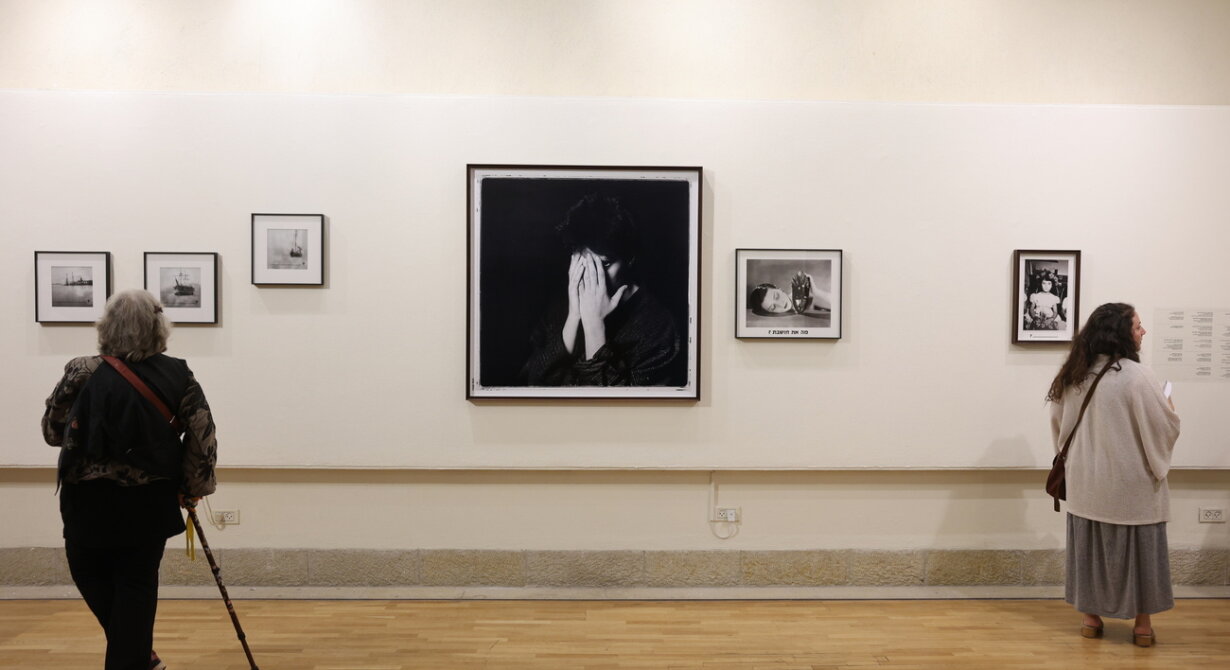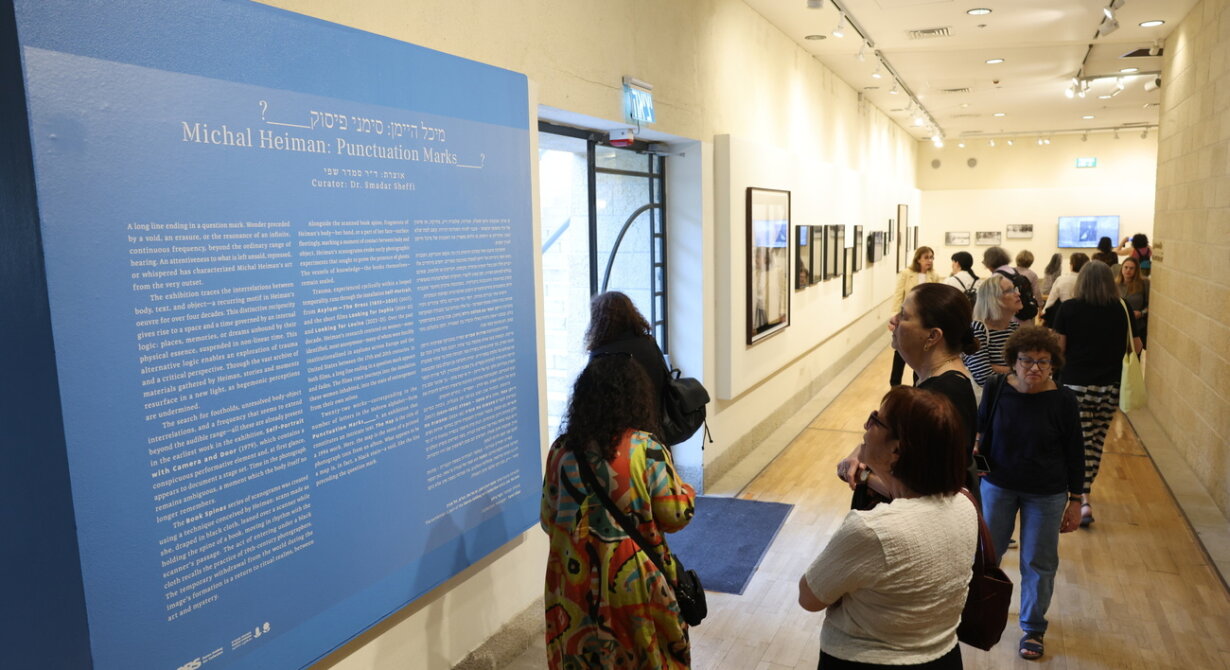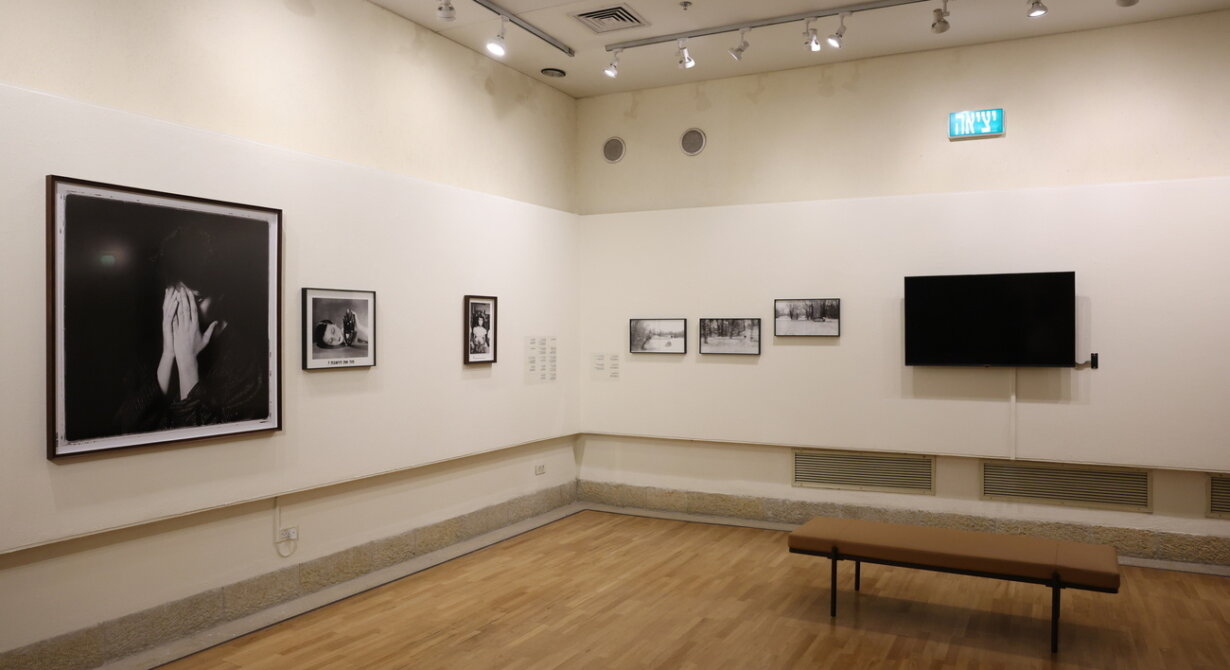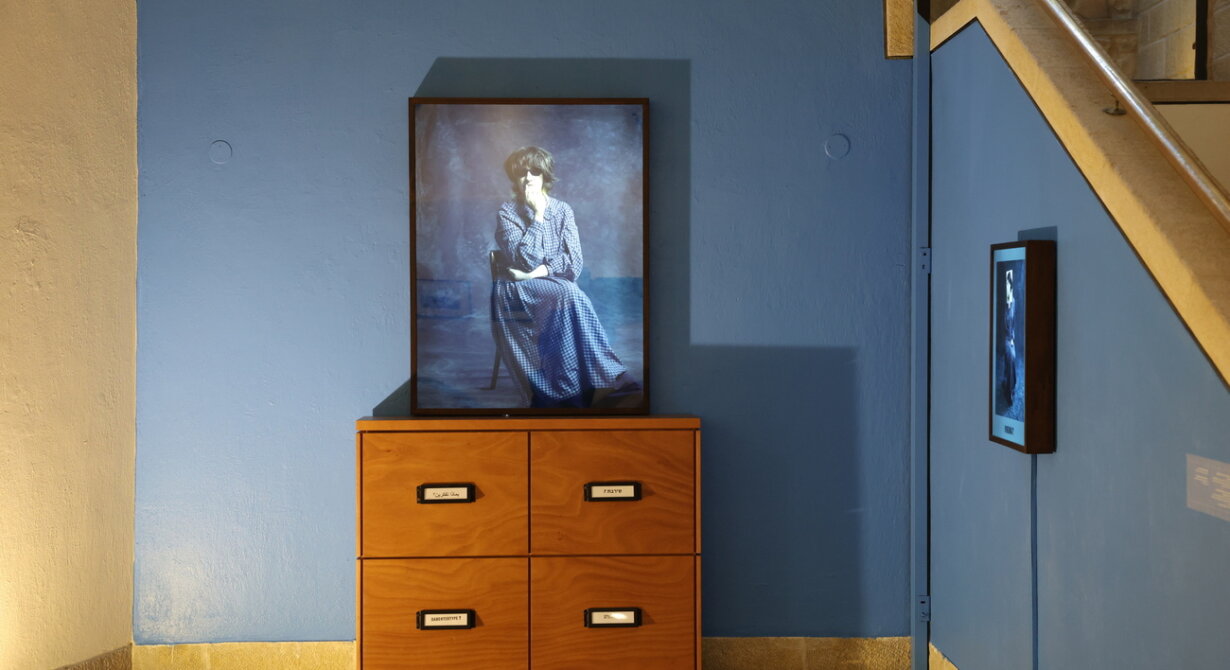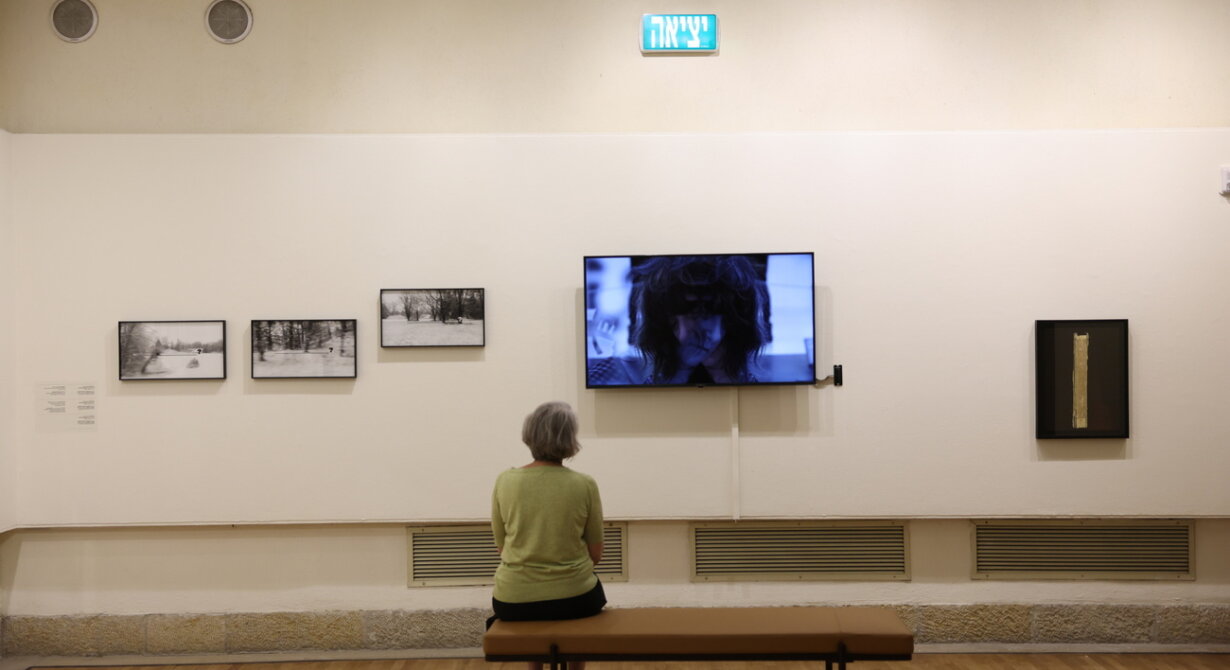Michal Heiman: Punctuation Marks______?
Curator: Smadar Sheffi
A long line ending in a question mark. Wonder preceded by a void, an erasure, or the resonance of an infinite, continuous frequency, beyond the ordinary range of hearing. An attentiveness to what is left unsaid, repressed, or whispered has characterized Michal Heiman’s art from the very outset.
The exhibition traces the interrelation of body, text, and object—a recurring motif in Heiman’s oeuvre for over four decades. These distinctive interrelations give rise to a space and a time governed by an internal logic: places, memories, or dreams unbound by their physical essence, suspended in non-linear time. This alternative logic enables an exploration of trauma and a critical perspective. Through the vast archive of materials gathered by Heiman, stories and moments resurface in a new light, as hegemonic perceptions are undermined.
The search for footholds, unresolved body-object interrelations , and a frequency that seems to extend beyond the audible range—all these are already present in the earliest work in the exhibition, Self-Portrait with Camera and Door (1979), which contains a conspicuous performative element and, at first glance, appears to document a stage set. Time in the photograph remains ambiguous, a moment which the body itself no longer remembers.
The Book Spine series of scanograms was created using a technique conceived by Heiman: scans made as she, draped in black cloth, leaned over a scanner while holding the spine of a book, moving in rhythm with the scanner’s passage. The act of entering under a black cloth recalls the practice of 19th-century photographers. The temporary withdrawal from the world during the image’s formation is a return to ritual realms, between art and mystery.
Alongside the scanned book spine, fragments of Heiman’s body—her hand, or a part of her face—surface fleetingly, marking a moment of contact between body and object. Heiman’s scanograms evoke early photographic experiments that sought to prove the presence of ghosts. The vessels of knowledge—the books themselves—remain sealed.
Trauma, experienced cyclically within a looped temporality, runs through the installation Self-Portrait, from Asylum—The Dress (1855–2025) (2017), and the short films Looking for Sophia (2024), and Looking for Louisa (2023–25). Over the past decade, Heiman focused her research on women—some identified, most anonymous—many of whom were forcibly institutionalized in asylums across Europe and the United States between the 17th and 20th centuries. In both films, a long line ending in a question mark appears and fades. The films trace journeys into the desolation these women inhabited, into the state of estrangement from their own selves.
Twenty-two works—corresponding to the number of letters in the Hebrew alphabet—form Punctuation Marks______?, an exhibition that constitutes an intricate text. The Map is the title of a 1994 work. Here, the map is the verso of a printed photograph torn from an album. What appears to be a map is, in fact, a black stain—a void, like the line preceding the question mark.
